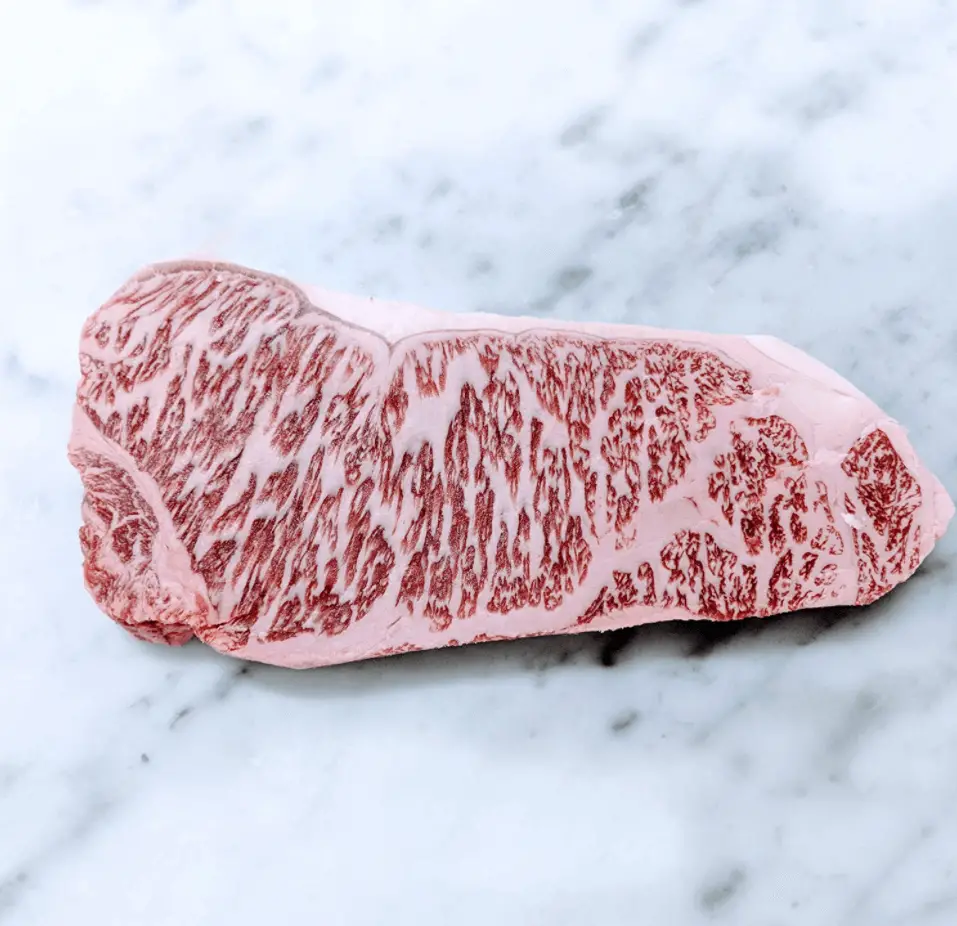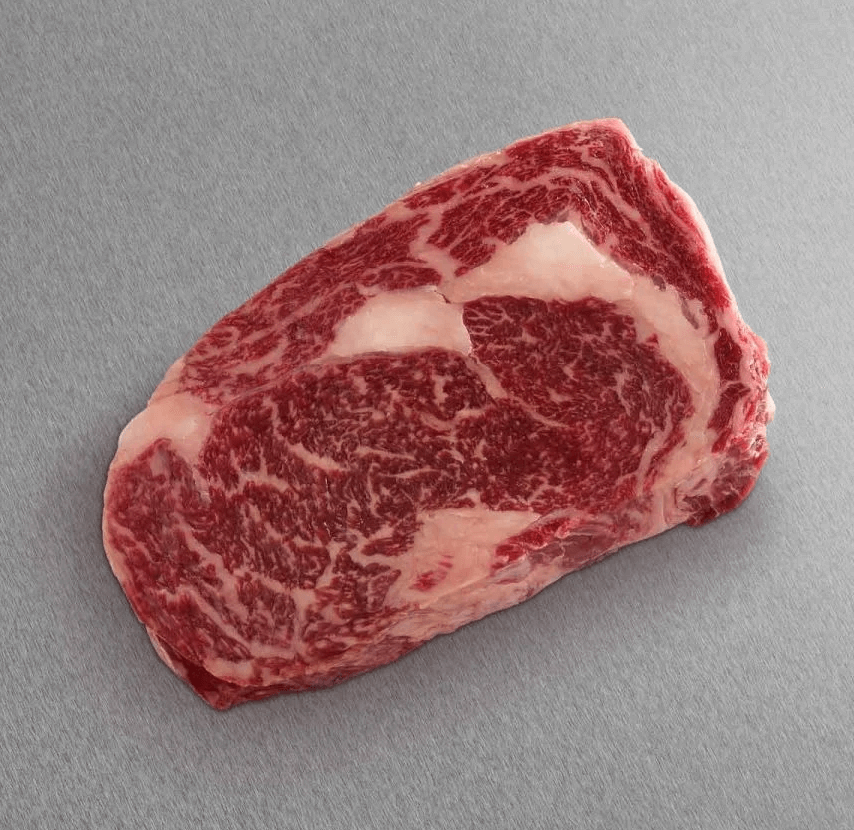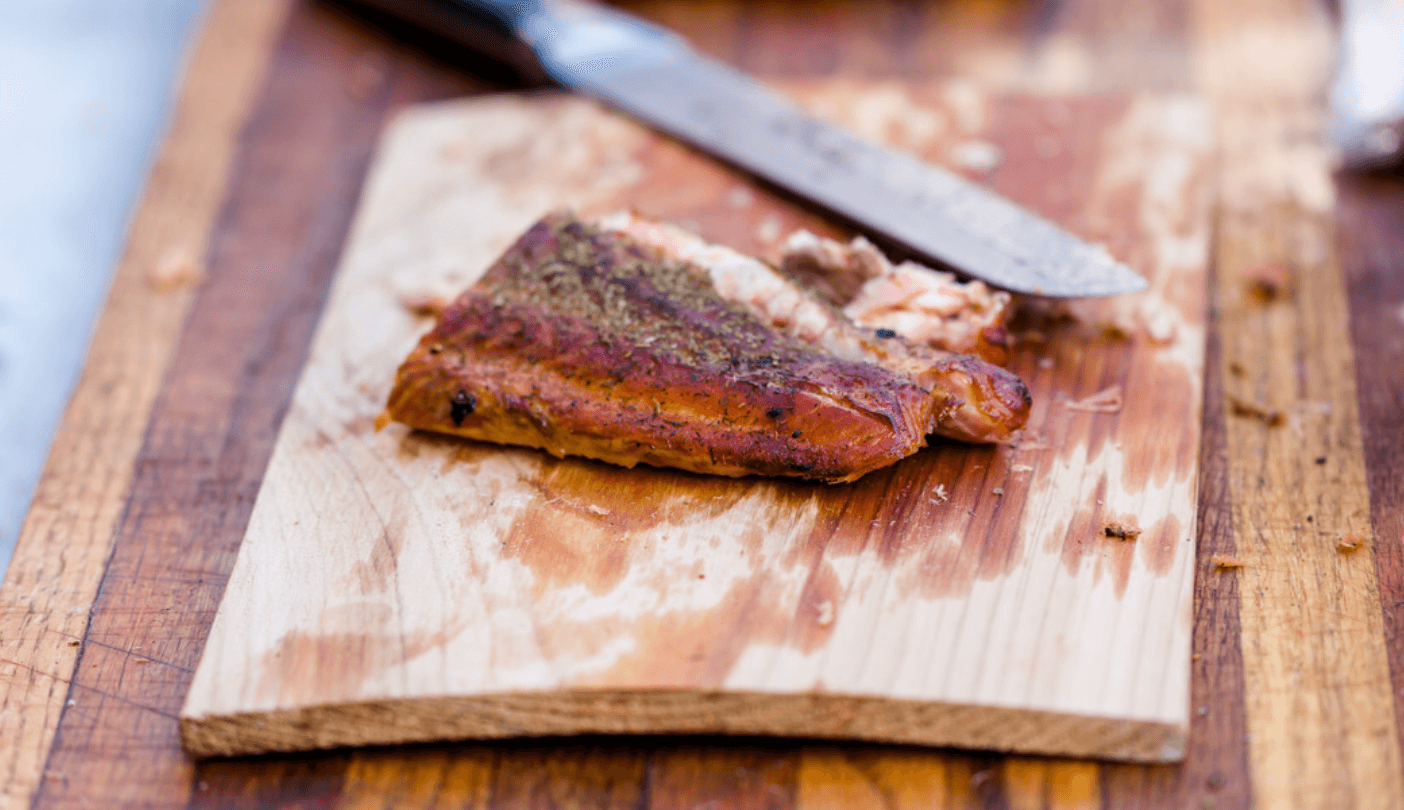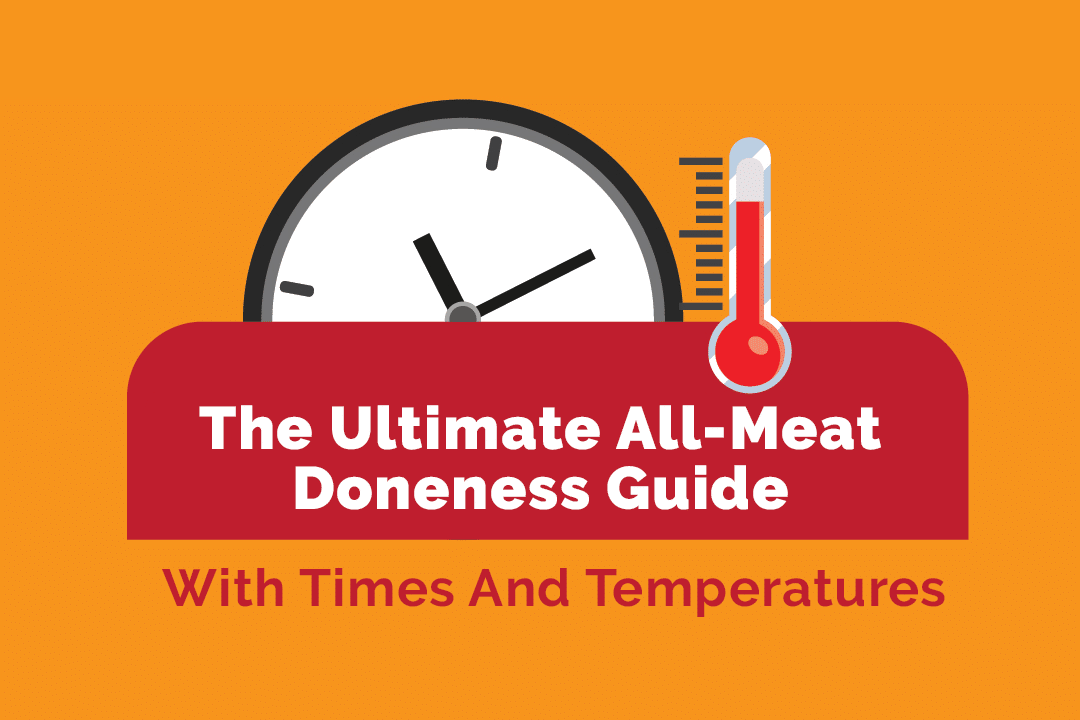Both Wagyu and Kobe beef are considered some of the world’s rarest and most expensive delicacies.
Their unparalleled flavor, melt-in-your-mouth texture, and juicy tenderness have always been on the top list of the tastiest meats you can get ahold of.
If you’ve heard of Wagyu, odds are you’ve come across a beef called Kobe as well. Each of these types of beef can likely be found at a high end steakhouses near you – with a huge price tag.
But what is the appeal of both these types of meat, and what’s the difference between Wagyu vs Kobe beef?
The short answer? Kobe is a subcategory of Wagyu. So all Kobe is Wagyu, but not all Wagyu is Kobe. And Kobe is the absolute best of the best when it comes to Wagyu.
Read on to find out more about the similarities, differences, and nuances between the two.
A Brief History of Japanese Beef: Wagyu’s True Origins
Raising cattle in Japan is a relatively new tradition due to the fact that, for over a millennium, eating meat was banned due to Japanese practitioners of Buddhism refraining from eating meat.
Meat consumption during this era was strictly prohibited, and cattle were primarily used for laboring in fields or mines. However, in 1872, the 1,200-year ban was lifted on the fifth reign of the Meiji Emperor, which subsequently added meat as a part of every Japanese diet.
Once lifted, efforts were made to expand the musculature of the local cattle by cross-rearing with imported varieties. Not until 1957 were the four Japanese native cattle breeds we know and love today was established.
They were then classified as the “superior breeds” of cattle, now known as Wagyu beef.
Understanding Wagyu Beef
Before we start the Wagyu vs Kobe comparison, we’d like to delve deeper into the true meaning of Wagyu.
The term wagyu literally means “Japanese cow”, whereas “wa”, means Japanese, and “gyu” means cow. Despite this, not all cattle in Japan are considered Wagyu beef. Only the finest of beef is entitled to be named as such.
The 4 Main Types of Wagyu
Kuroge Washu
Famous worldwide for its concentrated finely grained marbling and its tender “melt in your mouth” texture, this breed of cattle comprises 90% of all Wagyu beef in the country.
The Kuroge Washu, also commonly known as the Japanese Black, is developed in south-western Japan. Matsuzakagyu, Miyazakigyu, and Tajimagyu are all Japanese Black.
Mukaku Washu
Commonly known as the Japanese Polled, this breed of wagyu came from crossbreeding the Japanese Black with the Aberdeen Angus.
This special beef has a lean yet distinctive taste that can be differentiated from other types of Wagyu and is popular for its gamy texture and robust, meaty taste.
This beef is extremely rare and comprises only about a hundred or so head of cattle remaining to its species.
You can learn more about the differences between Wagyu and Angus beef in our article here.
Akage Washu
Akage Washu has many names. It’s often called “Akaushi” in Japan, and, for us English speakers, the Japanese Brown or the Japanese Red.
This breed is known for its mild, light taste, and tends to be leaner with a lower fat content compared to the Japanese Black.
Nihon Tankaku Washu
The Nihon Tankaku Washu, or the Japanese Shorthorn, makes up less than 1% of wagyu beef, and are mainly raised in the Tohoku Region.
It’s known for its lean, savory flavor due to being rich in Inosinic and Glutamic acid.
What Makes Wagyu… Well, Wagyu?
Grading Criteria
There is a set of standards that needs to be passed before being classified as quality wagyu.
- The beef has to be a certain IMF%, which in essence measures its level of marbling
- The meat’s brightness and color
- Its firmness and overall texture
- Quality of the fat
Wagyu steak is expected to rank no less than exceptional, and ratings are taken seriously within each system.
About the Wagyu Grading Scale
In order to accurately rate the stringent industry standards of wagyu meat, the Japanese Meat Grading Association (JMGA) devised a grading system based on two scales. The first one being the amount of meat yielded, classified from A-C class.
Beef labeled as A-class has a higher yield of quality meat in relation to its cutability, resulting in the A grade. It’s given to cattle that deliver 72% or higher percentage yield. B and C grades result from lower percentages.
The other scale refers to the quality of each of the factors listed above, ranked from 1 to 5, with 1 being the lowest, and 5 the highest.
Quality scores for each rank range from 1 to 12, which are classified as follows:
- Score of 1 = Poor
- Score of 2 = Below Average
- Score of 3 – 4 = Average
- Score of 5 – 7 = Good
- Score of 8 – 12 = Excellent
The very best of wagyu scores at A-4 or A-5. A5 grading is typically achieved when the cattle being raised is fed with special types of food out of forage, grass, and rice straw.
This is commonly supplemented with corn, soybean, grain, and, in some cases, beer or sake. They’re also given exceptional care and placed in a low-stress environment during their raising.
So now that we understand the Japanese grading system, thereafter comes this: what exactly is Kobe beef?
What is Kobe Beef?
The Best Of the Best
In simple terms, Kobe is a type of wagyu beef that falls in the subcategory of the breed of Japanese Black.
This means that all Kobe is Wagyu, but not all Wagyu is Kobe.
There are three bloodlines within the Japanese Black breed; the Tajima, Kadeka, and Shimane. Kobe beef is made from the purest of Tajima bloodlines, and are born and raised in the Hyogo prefecture.
Scarcity
Every year, just about two or three thousand cattle are labeled to be certified Kobe beef.
Imagine that; out of the ~1 billion annual cattle population, only about three thousand is identified as Kobe beef! This makes it the rarest food sold in the industry, up there with Caviar and Fugu.
It certainly explains why this meat is widely sought-after and considered the most expensive meat world-wide.
Now let’s answer the question we’re all here for: What is the difference between Wagyu beef vs Kobe beef?
Wagyu vs Kobe: Similarities and Differences
Let’s start off by discussing the similarities between Wagyu and Kobe.
Similarities
Both Wagyu and Kobe share a unique “luxurious” robust meaty taste. It’s set apart by its flavor, but it’s indisputable that Wagyu and Kobe are both succulent meats. Here are some of the similarities found in Wagyu and Kobe:
High Marbling
Just like the wagyu beef, Tajima’s Kobe is valued for its capacity to develop incredibly high degrees of marbling that melts at a lower temperature than any other breed of cattle.
This gives it a rich, buttery flavor that isn’t common in regular strains of beef. Not only that; as both kinds of beef is high in Omega-3 and 6 fatty acids, it means that, despite its thick levels of marbling, it’s still healthier compared to other types of meat.
Grading Process
Wagyu and Kobe are also similar in regards to the Japanese grading scores that must be achieved before being classified as authentic Japanese beef.
They both undergo the meticulous process of raising the cattle to turn it into the finest wagyu delicacy. These cattle are tended to closely throughout their entire lives. They’re fed the finest grain and grass, and make sure they’re cared for until the day they’re slaughtered.
Quality Meat
Due to the time, effort, and care is given to every single wagyu cattle, it’s no surprise that both Wagyu and Kobe beef sell for the highest price per pound. They’re both the highest quality meat found in the market today.
Differences
Other than being of the Tajima bloodline, there are other specific requirements needed for a cattle’s beef to be considered Kobe.
Stricter Quality Control
Most of it is the same as that of Wagyu beef, but Kobe beef unquestionably takes the cake with respect to the number of guidelines and quality control given just to be considered authentic Japanese Kobe.
Here’s a little look on the commonly known guidelines that must be passed when grading Kobe beef:
- Cattle must be conceived, taken care of in the Hyogo prefecture
- Cattle must be slaughtered only in the Hyogo prefecture.
- Must be 100% pure Tajima black strain Wagyu, including its every known ancestor.
- Must be at least 32 months old before slaughter.
- Must come from a steer or virgin cow.
- Scores, when graded, must be at least A4 or higher, including a marbling rate of 10 or higher.
- The gross weight of beef produced from a single animal must not exceed around 470 kgs, (or approximately 1,036 lbs).
- Must be marked with a Japanese Chrysanthemum as part of Japan’s security system.
- Must have excellent firmness and fine meat texture.
Only the best of meats will be certified Kobe, set apart by an official seal and identification number that permits anyone to track the purchase of meat to the animation it originated from.
Rarity
Even in Japan, Kobe beef is exceedingly rare. The Hyogo government houses only a dozen of their most ideal bulls in a special facility, using their semen to inseminate all cows.
This means that every Kobe beef produced and distributed globally is fathered by these “perfect” full blood specimens. Despite that, after being slaughtered and graded, only about half of the Tajima cattle meet the full requirements and are qualified as top-grade Kobe beef.
Care
Kobe beef cattle are said to be treated differently than wagyu cattle. Along with sake baths, and the occasional massage to keep these cows happy, they’re also given classical music to listen to put them in a perfect state of zen.
These steps are taken to ensure that Kobe beef is unsurpassable and can’t be imitated by any other type of cattle, which is what makes them utterly exclusive.
In comparison, Wagyu beef can actually be raised and harvested anywhere in the world.
They’re also fed the best feed available, but their care isn’t as meticulous as those in the Hyogo prefecture. You’ll find Australian, American, and European wagyu being served in the finest of restaurants. They’re top quality Wagyu, despite not being raised in Japan.
Where to Find Wagyu and Kobe Beef
It’s said that only about 40 restaurants in the US have true Japanese wagyu beef on their menu; 8 of which serve genuine Kobe beef. Even then, it’s taken by request only, and often only in special events.
Needless to say, these are some of the rarest cuts of beef on the planet.
However, Holy Grail Steak Co. is the only online retailer approved by the Kobe-Niku Association – they aren’t in stock all the time because they only get a certain amount of product, but if you are lucky they will be in stock and you can grab some A5 Kobe beef and have it shipped directly to your door step. Check out my Holy Grail Kobe Beef review where I ordered a cut of Kobe (hint, it’s spectacular).
There are a couple of ways to get ahold of American Wagyu beef – our favorite being Snake River Farms, an American Wagyu ranch that will deliver incredibly high quality meat straight to your doorstep. It’s not exactly the same thing as bona fide Japanese Wagyu, but I can personally attest that the beef is spectacular.
Snake River Farms' top of the line ribeye steak is hand cut to 1.5" thick. Over 1,800+ 4.5 star reviews.
Final Thoughts on Wagyu vs Kobe Beef
Both Wagyu and Kobe share a deep, mouthwatering taste that’s brimming with flavor and decadent textures. They both make for a delightful dining experience and are delicious in their own unique way.
It wouldn’t be unfair to say that one is better than the other. Taste is often subjective after all, and can’t be judged by any group of individuals. The experience that these succulent meats bring to one’s palate is incomparable, and can only be measured when consumed.
They’re expensive, yes. But no matter which you choose between Wagyu vs Kobe – every bite is well worth the price tag, and won’t let you down!
Discover more from Own The Grill
Subscribe to get the latest posts sent to your email.






